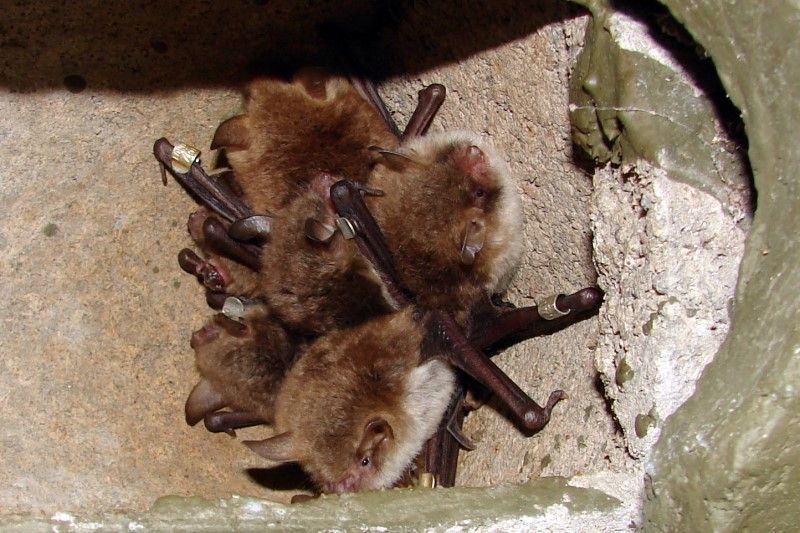Natterer’s bat

Status
Native and fairly common
Population
Either 973,000 (based on woodland) or 414,000 (based on mixed habitat)
Scientific name
Myotis nattereri
Natterer’s bats look very similar to Daubenton’s and whiskered bats but have a pink, dog-like face. The tips of their ears curve slightly backwards and are pink at the base and darker at the tip. They have sandy-grey fur on their back and white fur on their underside, which can be clearly seen at dusk as they fly above. The old name of ‘red armed bat’ was given because their pinkish limbs are visible through their wings, which are broad and slightly pointed. Their tail membrane is lined with a fringe of short hairs and often held downwards to improve manoeuvrability. They are able to hunt in confined spaces, taking insects from foliage as well as flying prey, and often feed over rough water, making very narrow turns amongst dense overhanging vegetation.
Wingspan: 24 – 30cm
Weight: 7 – 12g
Lifespan: Up to 20 years
Reproduction
Natterer’s mate throughout autumn and winter and females form maternity colonies from May to July. Usually a single pup is born in June or July, and is weaned by six weeks.
Diet
Crane flies, midges, dung flies, spiders and other small insects.
Summer roosts
Old stone buildings, churches, gaps in the wooden beams of buildings, and hollow trees.
Winter roosts
Generally hibernate from December to spring, commonly in caves, cellars and mines.
Habitat
Deciduous woodland and open water sheltered by tree cover. They can often be seen along roads lined with high hedges.
Predators
Occasionally barn owls.
Threats
Loss of roosting sites.
Ultrasound
The echolocation calls of Natterer’s bats are quiet and can be difficult to detect with a bat detector. They have short calls between 35 – 80 kHz, with a peak intensity at about 50kHz.
Status and conservation
GB Red List: Least Concern (LC).
Population size and distribution
Either 973,000 (based on woodland) or 414,000 (based on mixed habitat). The populations has increased in surveys of hibernation sites since 1999 but there is no clear trend from counts of colonies. Natterer’s bat is widely distributed throughout Britain and Ireland, except for the far north of Scotland.
Did you know?
Occasionally, Natterer’s are found hibernating in unusual positions — sometimes resting on their heads or lying on their backs.
